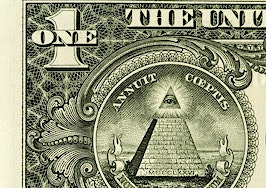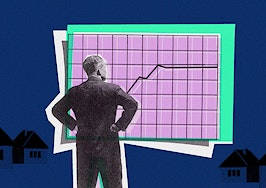- Tallying various threats through 2014 and 2015, ANHD’s study considered neighborhoods qualifying for more than 15 risk factors as most threatened.
- Aside from Riverdale/Fieldston, Throgs Neck and Morris Park/Bronxdale, all neighborhoods in the Bronx face more than 15 threats to affordable housing.
- Brooklyn's most at-risk neighborhoods for affordable housing were Bedford-Stuyvesant, East New York and Brownsville.

Bedford-Stuyvesant, Brooklyn/Flickr user rutlo
The Association for Neighborhood and Housing Development’s (ANHD) recently released an affordable housing risk chart for New York City. It had the Bronx and Brooklyn holding the most neighborhoods with a heavy number of risk factors.
According to the report, various few key points are likely limiting affordable housing accessibility, ranging from unemployment, rent burdens, crowding and affordable units facing market rate increases.
Throughout New York City, shifts in residential sales prices push real estate speculation, so predictions for the market might be limiting construction and growth of affordable housing properties.
Illustrating the severity of various threats throughout the five boroughs in 2014 and 2015, ANHD’s study considered neighborhoods qualifying for more than 15 risk factors as most threatened.
Bronx
Aside from Riverdale/Fieldston, Throgs Neck and Morris Park/Bronxdale, all neighborhoods in the Bronx face more than 15 threats to affordable housing.
The three neighborhoods with the highest number of risk factors include University Heights/Fordham (28 threats), Highbridge (26 threats) and Bedford (24 threats).
University Heights, which featured a high percentage of tax delinquencies in 2013, had 40.9 notices of foreclosure rates per 1,000 one-four unit properties in 2015.
Further, 67.3 percent of University Heights residents faced rent burdens in 2014 (61.4 percent for seniors), and the neighborhood had the highest share of severe crowding in 2014 at 7.4 percent. Over 3,100 residents applied and were eligible for shelter between 2012 and 2015.
Brooklyn
The most at-risk neighborhoods for affordable housing include Bedford-Stuyvesant (19), East New York (18), Brownsville (18), East Flatbush (16), Prospect Heights (16), Bushwick (15) and Crown Heights (15).
The unemployment rate in Bedford-Stuyvesant was 7.8 percent in 2014, while there was a 139 percent change in residential sales price per square foot between 2010 and 2015.
East New York, where the City Planning Commission recently ratified rezoning for more affordable units, had 3,511 families approved for shelter between 2012 and 2015.
Manhattan, Queens, Staten Island less risky
The Washington Heights/Inwood area held Manhattan’s highest number of risk factors (15). In 2014, there were 48,251 rent-stabilized apartments in the neighborhood, which held a 7.5 percent unemployment rate.
With an 8.3 percent unemployment rate in 2014, Jamaica/Hollis in Queens had 16 risk factors. In 2015, there were 37.8 notices of foreclosure within one to four unit properties.
Stapleton/St. George in Staten Island is considered at moderate risk with nine threats. A high percentage (7.2 percent) of four-plus unit family properties in the neighborhood had tax delinquencies in 2013.
Two programs sponsored by the City Council include the Housing Preservation Initiative and Community Consultant Contracts, which provided community groups to counsel a combined 16,000 tenants and 2,500 homeowners throughout NYC.
The Neighborhood Preservation Consultant Program, funded by Mayor Bill de Blasio’s office, uses strategies to help displaced residents. However, the program has faced hefty budget cuts as of recent, limiting its reach significantly.
ANHD says the critical factor in preserving affordable housing is investing in “local on-the-ground neighborhoods partners” to protect tenants and stabilize communities.













